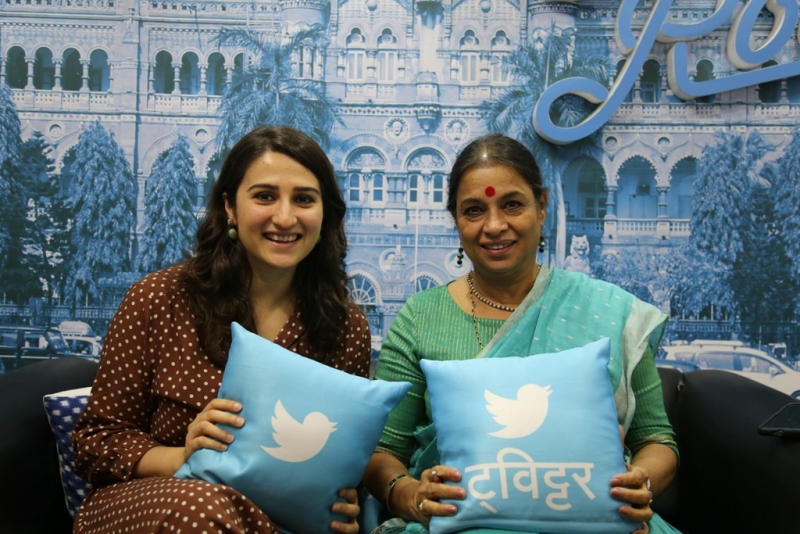The following is an excerpt from a speech given by Dr Ranjana Kumari at the ESafety Conference 2017, held in Australia recently.


A few months ago, a team of four from our organization travelled to the state of Jammu and Kashmir, and visited the city of Kargil for a workshop on online safety. Located at a height of 2,676 metres (8,780 ft), Kargil is often associated with the India-Pakistan war of 1999. During the workshop, our team realized that students were well versed with the nuances of internet and social media, despite poor connectivity and access to internet in the area. As one of the students told our team “If we get half an hour of internet access in a day, we are very lucky!”
While internet is making inroads in India, the online gender gap is of concern, with only 29% of Indian women having access to internet. This phenomenon is a serious social issue, because the United Nations has recognized access to internet as a basic right. One explanation for this is the missing infrastructure- women are less likely to own and given access to, smartphones or computers. They are less likely to be educated, and are subjected to constant pressure to be quiet, leading to their low public presence in offline and online spaces.


Another factor which is a great contributor to the lack of women on online platforms is the online harassment and cyber crime which they are subjected to. This can be illustrated best by our experience in the state of Haryana. During a visit to a college in this state, known for extreme levels of patriarchy, caste politics and low male-female sex ratio, to talk about online safety, we found that while the girls were fluent in the language of the internet, there was a lot of stigma around them using social media. “We don’t create accounts in our names, because then the boys from our class will stalk and trouble us. We use our brothers’ phones and their accounts to access social media.”
A reality of the Indian online experience is the increasing rates of cases of online harassment. In a research study, it was found that eight out of 10 people have encountered some form of online harassment, cyberbullying and cyberstalking,. The most common forms of online harassment are abuse and insults, and malicious gossip and rumours. Those with disabilities, mental health issues, and weight problems have multiple incidences of abuse or insults online. Sexual harassment, a crime which India is notorious for inflicting on its women, is also a key feature of the Indian online experience. Online harassment is faced by all genders and categories of people, the difference coming in the kind of harassment faced.


Online harassment often triggered emotional reactions, with people being angry, frustrated and irritated due to such experiences. Worryingly, one in four women found their experience frightening. Due to these occurrences, women are scared to access internet, and distance themselves even more from online platforms. The offline crimes such as extortion, revenge porn, stalking and domestic violence, are making inroads on cyber space as well, and this is what is causing lesser women to access, and create their own space on the internet. There are some legal frameworks, but the lack of infrastructure and training related to cyber security, coupled with ignorance about the seriousness of cyber crimes, has led to wide gaps in the policies related to cyber space. These hurdles serve to increase the gap between men and women in the online world.
This gender gap is a matter of serious concern, especially in light of the United Nations declaring access to internet as a basic right. To alienate women in the online spaces is detrimental to the gender movement, because the internet acts as a catalyst in the process of women’s empowerment by opening up avenues for women to freely articulate and share their experiences, concerns and knowledge, creating the possibility of their further individual and societal development. By way of the internet, women can broaden the scope of their activities and address issues previously beyond their capacity and geographical boundaries. There is a growing body of evidence on the use of information and communication technology to empower women all over the world. In India, there are many examples and stories of how internet and telecommunications has benefited women. Recently, internet giant Google has launched its Internet Saathi program in Haryana, Bihar and Rajasthan wherein 25,000 fully trained Internet Saathis are working everyday across multiple villages in order to help women and children learn about the Internet. According to Google, around 10 million women are expected to gain out of this program.
Off late, there are many wonderful examples of social media being used to raise awareness on issues pertaining to women, and their offline and online experiences of harassment and violence. The #MeToo campaign, aimed to share narratives of sexual abuse and harassment across the world, has achieved more than 5.8 billion impressions, involving almost a million users. The social issues of Right to Pray and Triple Talaq, were also influenced majorly by social media advocacy by organizations and individuals.


As far as Centre for Social Research goes, we have been working towards online safety in a very concrete manner. In collaboration with Facebook, we launched a programme called Social Surfing which seeks to empower users of social media by encouraging a positive online experience and by maximizing the use of social media platforms for social change. We conduct workshops in colleges across the country encouraging young people to combat Hate Speech on the internet with Counter Speech, and to start their own social media campaigns for change. In the two years since conception of this program, the organization has reached out to over 250 colleges across the country, including lesser frequented places like Nubra and Kargil in Leh and Ladakh, Aizawl in Mizoram, Tura in Meghalaya, Hojai and Bongaigaon in Assam and Balasore in Orissa. More than 20, 000 students have been trained on matters of online safety through these workshops, and many grievances and queries, especially of girls on cyber crime and online harassment have been addressed by the team.
Additionally, in collaboration with Twitter India, CSR has developed a web resource, called #Tweesurfing, aiming to inculcate a culture of cyber etiquette amongst users of Twitter. By using interviews with influential figures, ranging from the field of politics, to entertainment, to development sector, the online platform targets millenials, and hopes to empower them with adequate resources and knowledge on using social media safely, in a socially relevant manner.


For the Centre for Social Research, an organization that seeks to build progressive and safe gender relations in Indian society, the way internet users perpetuate regressive patriarchal notions of womanhood in the digital world has been an area of grave concern. Through our work, we hope to not only increase the number of women who have access to internet and use it for their benefit, but also reduce the number of online crimes, and negative experiences faced by internet users. Additionally, we aim to inculcate a culture of using social media and the cyber space for the benefit of society. We firmly believe that the online world is a space for activism and it is time to inspire the youth to do the same.




